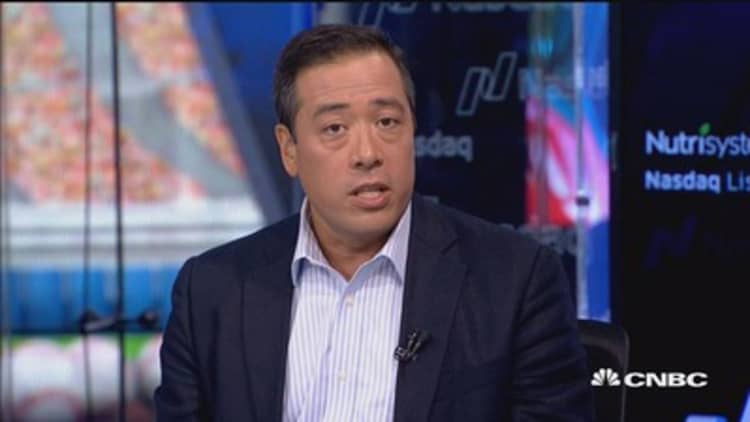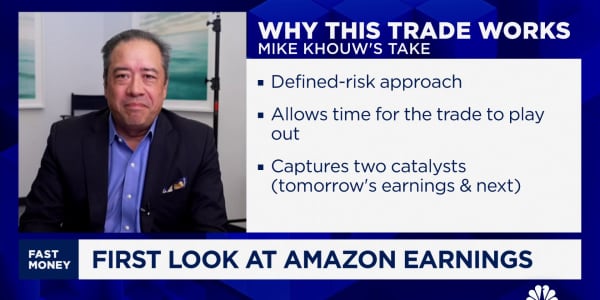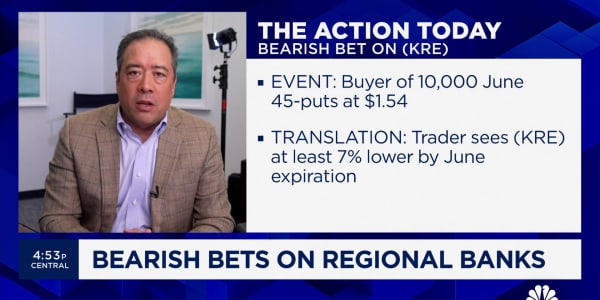
The so-called market fear gauge could be indicating more gains for stocks.
The CBOE Volatility Index, or the VIX, has bounced around lows for the year for the past couple weeks. And far from taking that as a sign of complacency, one trader who specializes in volatility-based investing says the coast is still clear for the market.
"When things get nasty or volatile, it usually doesn't happen off a big selloff in the VIX and all of a sudden, right back up," Brian Stutland said Friday on CNBC's "Options Action." "Right now we're kind of at an in-between stage, and I think the market continues to press higher."
The VIX is based on options activity in the S&P 500, and tends to move inversely to the stock market index. A higher VIX indicates that traders are anticipating greater moves in the market and are paying more for options. Conversely, when the VIX drops lower, it can indicate complacency and calm in the market.
After hitting close to highs for the year in July, volatility dropped to 11.95, its lowest level since December 2014.
Stutland, chief investment officer of Equity Armour Investments, said investors should look for a key pattern in the fear gauge, which currently indicates that there's still more room for the VIX to drop, and stocks to continue their gains.
He said the VIX often follows a "resting heartbeat trend," before a substantial spike. This creates small periods, or "cups," where the VIX sits while the stock market hits new highs. The S&P 500 was trading about 2 percent away from all-time highs on Monday.
According to Stutland's charts, the VIX's resting heartbeat pattern preceded a spike in December, and again in early July.
Once the VIX begins to make higher lows following the "cup formation," Stutland said that's the time to sell stocks.
"Now we're in a period where VIX has basically trailed off and made a downtrending formation here, which for me is actually a bullish indication of stocks," Stutland said. "We're not in that resting heartbeat quite yet. So to me, I'm not ready to sell this market just yet."
Stutland said investors should wait until the VIX settles around 10 or 11 before looking to sell stocks.
The VIX was up 10 percent Monday to 13.33.





